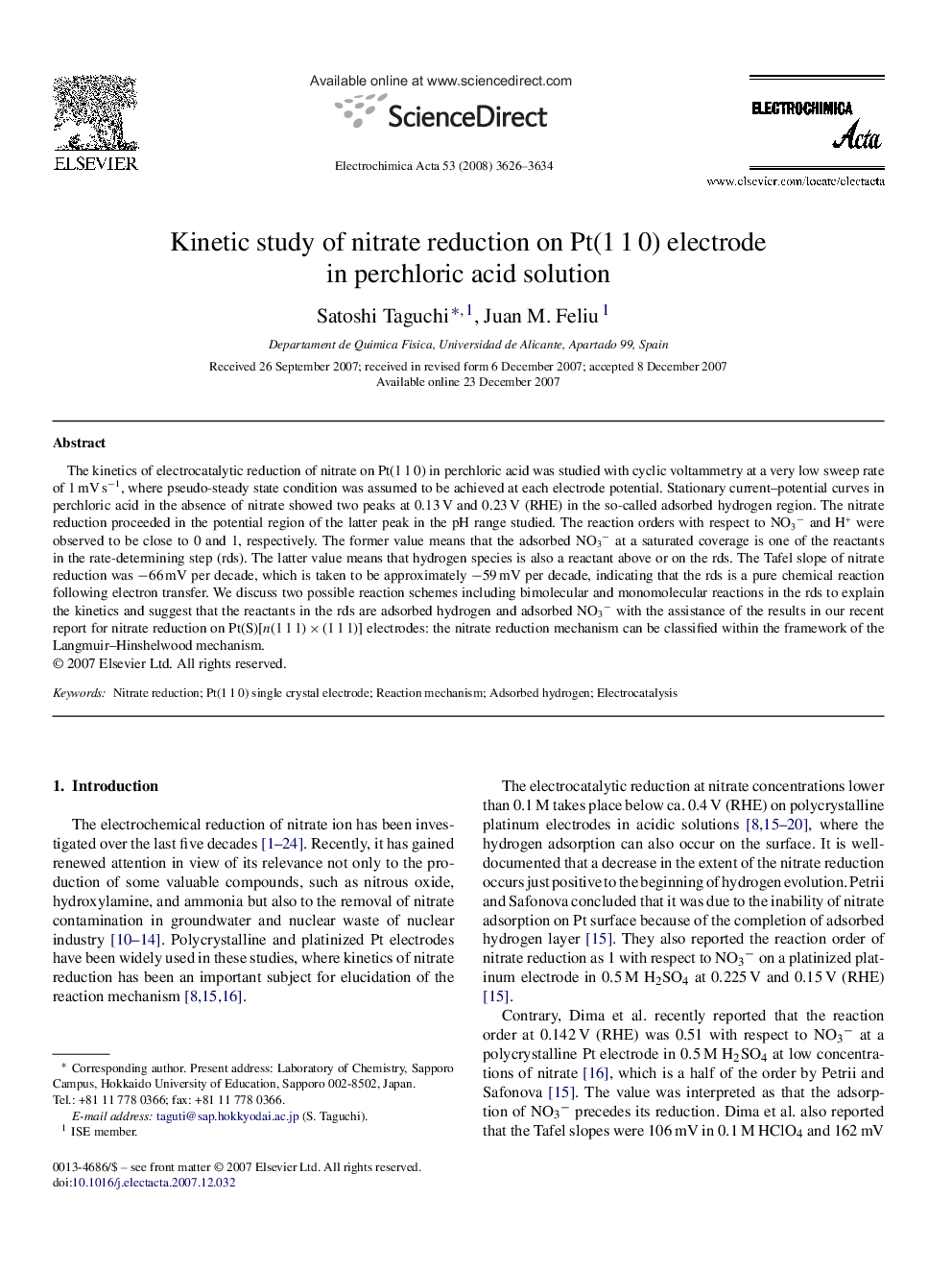| Article ID | Journal | Published Year | Pages | File Type |
|---|---|---|---|---|
| 193116 | Electrochimica Acta | 2008 | 9 Pages |
The kinetics of electrocatalytic reduction of nitrate on Pt(1 1 0) in perchloric acid was studied with cyclic voltammetry at a very low sweep rate of 1 mV s−1, where pseudo-steady state condition was assumed to be achieved at each electrode potential. Stationary current–potential curves in perchloric acid in the absence of nitrate showed two peaks at 0.13 V and 0.23 V (RHE) in the so-called adsorbed hydrogen region. The nitrate reduction proceeded in the potential region of the latter peak in the pH range studied. The reaction orders with respect to NO3− and H+ were observed to be close to 0 and 1, respectively. The former value means that the adsorbed NO3− at a saturated coverage is one of the reactants in the rate-determining step (rds). The latter value means that hydrogen species is also a reactant above or on the rds. The Tafel slope of nitrate reduction was −66 mV per decade, which is taken to be approximately −59 mV per decade, indicating that the rds is a pure chemical reaction following electron transfer. We discuss two possible reaction schemes including bimolecular and monomolecular reactions in the rds to explain the kinetics and suggest that the reactants in the rds are adsorbed hydrogen and adsorbed NO3− with the assistance of the results in our recent report for nitrate reduction on Pt(S)[n(1 1 1) × (1 1 1)] electrodes: the nitrate reduction mechanism can be classified within the framework of the Langmuir–Hinshelwood mechanism.
